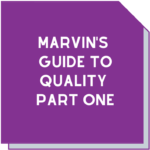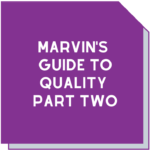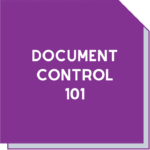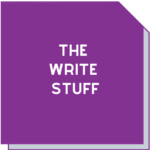Are you drowning in documents?
 Imagine having all the documents you deal with in a week piled on your desk.
Imagine having all the documents you deal with in a week piled on your desk.
If you were to include print outs of your work and personal emails the pile would probably be too high to see over!
Clearly, you’re not going to do this (no time, waste of trees) but thinking about that pile will give you some idea of how big a part documents play in our everyday lives. And if you’re in a laboratory, they’re even more vital.
Lab documents provide essential guidelines and references for what we do. They allow us to review our activities and train staff.
Even more importantly, they provide proof that our testing and calibrations are accurate and reliable. This information is critical for external accreditation and audit bodies but also for our clients.
Staying on top of it
Since documents do provide those guidelines, they need to be current. Those pieces of information about processes, policies and procedures are like a roadmap for your lab.
To continue the analogy, without clear, concise, and up-to-date instructions you could find your staff heading for an unintended destination.
Lab quality documents can be defined as:
Policies – a statement of overall intent and direction. This is a broad and general direction for the quality system and in essence tells people which way to head.
Processes – these are the steps used to implement the quality policy and achieve quality objectives. They are a set of interrelated or interacting activities that turn lab inputs into outputs. These explain how we get there.
Procedures – the specific, detailed, and step-by-step explanation of carrying out activities. These can be considered an explanation of how to do it.
Records – the pieces of information that prove what you did.
Think of the relationship between these sets of documents as a tree.
The policies are the roots because they form the base for all functions; the processes are the trunk, and the procedures are the branches.
If we follow through with the tree analogy, the fruit could be considered your lab’s outputs (records) which are hopefully abundant (although not necessarily tasty…).
What makes a good document?
 We’ve all seen instructions or signs that make us scratch our heads and think “What?”
We’ve all seen instructions or signs that make us scratch our heads and think “What?”
However, in a lab setting, instruction documents must be unambiguous and accurate. They should also be written in a style that considers who will be reading and using them.
A standard outline for documents can be helpful to achieve this. Current staff will quickly become familiar with the structure and new staff will find documents with the same layout easy to navigate.
Of course, staff should know where to find and access documents, particularly those that relate directly to their role.
Explain their why
It may be tempting for staff to skip over documenting something they think is unnecessary or too time consuming for them to bother. Or perhaps they received a verbal instruction from a colleague, carried out the action but didn’t document it.
That’s why there must be adequate and ongoing training not only on completing relevant documentation but also to explain why. It’s particularly important for staff to have clarity on what place the documents they’re completing have in the system.
Seeing the whole picture should remove the temptation to skip over documenting a piece of work they don’t believe is relevant.
In essence, all systems depend on someone doing a thing. If someone doesn’t do that thing, the system will fail.
Document searching made simple
 You could have the best templates and documents in the world but they’re no good to anyone if you can’t find them!
You could have the best templates and documents in the world but they’re no good to anyone if you can’t find them!
Information is a major product of your lab, so manage it carefully with a good system.
Use a simple, easy to understand naming protocol and be sure staff know and use it. Names should be logical and perhaps include a date in the title. ‘Daveswork’ is unhelpful whereas ‘210202Clientname’ is easily searchable and makes much more sense.
If your lab is accredited or certified by an external body, you can guarantee that an auditor will want to see your documents and records. Since your documents reflect your lab’s organisation and quality management, it’s critical they’re in good order.
Software solutions
Software and digital tools should make finding documents easy. However, any standardised lab approaches to documentation across operations will also streamline the process. Templates will ensure consistency of information and data collection and capture.
There are plenty of vendors that offer document control system software solutions. This could come with its own set of issues including security, access, and compliance. External accreditation bodies would certainly require validation of an electronic system.
For a small lab the cost would probably outweigh the perceived convenience. Larger labs would need to ensure that the navigation and retrieval is both simple and quick. If you decide to go down this path, our recent article will give you some pointers on what to look for.
The final word
While we know that there’s plenty to keep you occupied in the lab, working with a clunky, unfriendly documentation system shouldn’t be one of them!
We can help you streamline your system and documents to make them user friendly and fit for purpose. And if you need to train your staff in documentation, we can run an inhouse session that can help.
Contact Maree (0411 540 709), Diane (0402 012 781) or email info@masmanagementsystems.com.au
You don’t have to do this alone!
Download the article Are you drowning in documents?






